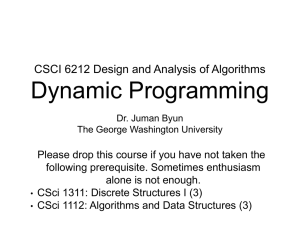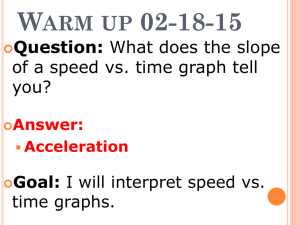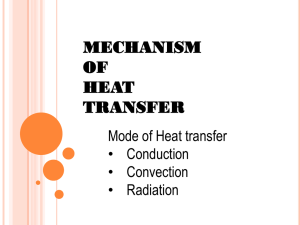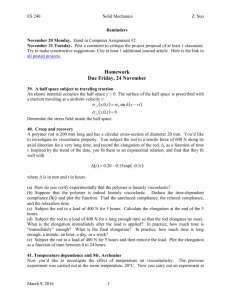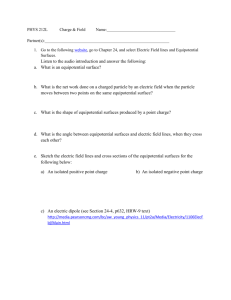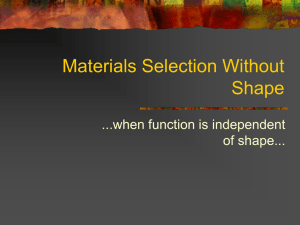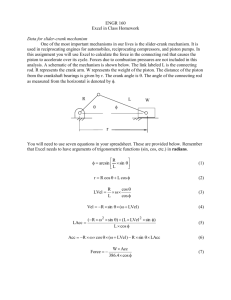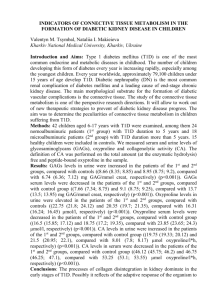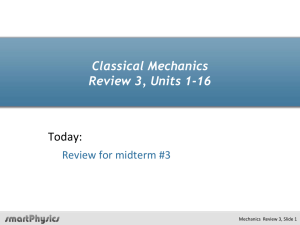Machines Simples, Mécanismes et Techniques
advertisement
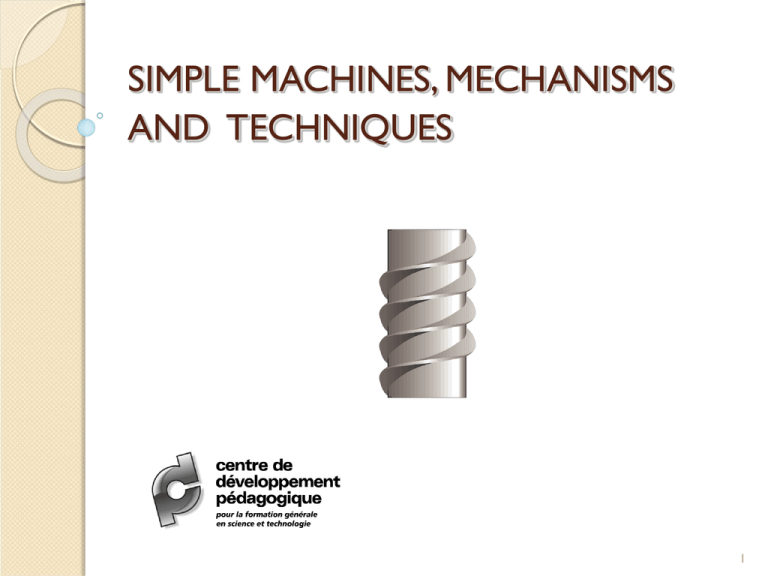
SIMPLE MACHINES, MECHANISMS AND TECHNIQUES 1 Relating to the program Forces and movements Simple machines Some notions about drawing Techniques and capsules The mechanism of motion The systems in projects 2 The program… In the material world, on page 174 of the QEP, you will find… Learning progression On page 6 of the learning progression in science and technology in primary school, you will find: Still on page 6 in the learning progression for science and technology, you will also find: Forces There are several types of forces. Today we will look at two, compression and tension. Generally, forces act on bodies one of two ways: 1. By pushing: This is what is called compression; 2. By pulling: This is what is called tension. 6 Compression Compression is a force that exerts a push on a body. When this force is applied, it causes or modifies the motion of the body. It may also distort it. F F 7 Tension Tension is the force that pulls a body. When this force is applied, it may cause or modify the motion of the body. Finally, it may also cause distortion. F F 8 Movements The mobile parts of a technical object may move according to three types of movement. 1. Rotation 1. Translation 1. Helical movement 9 Types of movement 10 Simple machines Simple machines are machines used to reduce the force necessary for the accomplishment of a task. Humans have learned to use simple machines to help in their everyday tasks. With an arrangement of simple machines, we obtain complex machines. 11 Simple machines (continued) Simple machines serve three main functions: 1. They transmit forces; 2. They change the direction of a force; 3. They modify the intensity of the force. 12 Simple machines (continued) Here are five simple machines: 1. The lever 2. The inclined plane and the wedge 3. The screw 4. The pulley 5. The wheel, the winch and gears 13 The lever 14 The inclined plane or the wedge 15 The screw 16 The pulley 17 The wheel and gears 18 Some notions about drawing … For technical drawing, there are international conventions such as: ◦ Type of line Thick Medium Fine ◦ Basic lines Visible contour line (thick, continuous line) Hidden contour line (medium dashed line) Axis line (fine line with stroke at the center) Dimension line (fine, continuous line with arrows) Extension line (fine, continuous line) Leader line (fine line with one arrow) ◦ Views ◦ Dimensions (in mm) 19 Basic lines Extension line Ø8 FACING Ø14 X 3 DEEP Leader line 50 Axis line 40 13 20 Visible contour line 40° Dimension line 45 20 80 Hidden contour line Basic lines (continued) Multiple views Among the six possible views, we choose to show those that are necessary to describe the shape of the object. Three views are usually sufficient to describe an object. Many simple objects only require one or two views. BACK VIEW LEFT VIEW TOP VIEW FACE VIEW BOTTOM VIEW RIGHT VIEW Making a complex machine Cartridge 23 A glance at the materials 24 THE LEVER TEETER-TOTTER WHEELBARROW 25 WEDGE AND INCLINED PLANE NAIL CLIPPER 26 Techniques and capsules • Work techniques • Safety capsules 27 Construction of a complex machine Your turn to play….. 28 Movement mechanisms There are many mechanisms, classified into two categories: 1. The transmission of motion; 2. The transformation of motion. 29 Movement mechanisms 1. Transmission of motion A transmission of motion mechanism is a mechanism that transmits the same movement from one part of an object to another. Here are three of the most common mechanisms: Gears; Friction wheels; Pulleys and belts. 30 Gears 31 Friction wheels 32 Pulleys and belts 33 Movement mechanisms (continued) Your turn to play….. 34 Movement mechanisms 2. (continued) Transformation of motion A transformation of motion mechanism is a mechanism that changes the nature of the movement, that is from a translation to a rotation or vice versa.. Here are the transformation mechanisms: Rod and crank; Cam and rod; Rack and pinion; Nut and bolt; Crankshaft. 35 Rod and crank Axis Crank: Mechanical part by which a force can transmit a rotary movement around an axis. Rod: Rigid rod that is used to produce a movement. 36 Cam and rod Rod or roller: Rigid rod leaned on the cam. Cam: Mechanical part whose function is to push an element to move it. 37 Rack and pinion Rack: Straight geared rod. Pinion: Gear 38 Nut and bolt Nut: Female part of bolt Bolt: Threaded cylindrical rod. 39 Crankshaft Crankshaft: « U » shaped axle with at least one rod that transforms a rectilinear movement into a rotary movement. 40 Movement mechanisms (continued) Your turn to play….. 41 The systems in projects Rod and crank: periscope Rod and cam: mouse/croc Rack and pinion: periscope Rod and crankshaft: Mechanical bugs Wheels: odometer Others… 42 Thank you! 43

